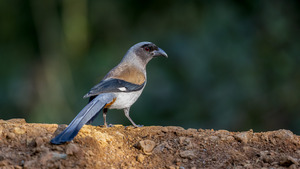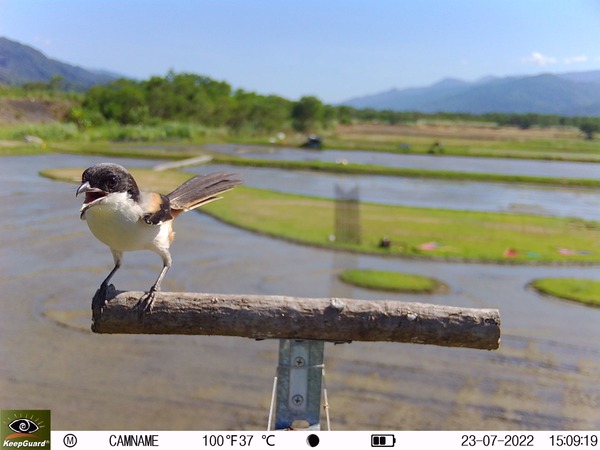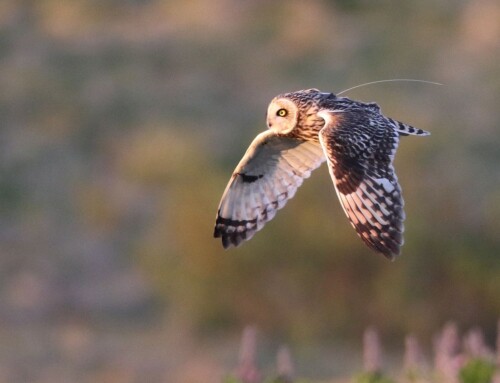 LINKED PAPER
LINKED PAPER
Using empirical data analysis and expert opinion to identify farmland‐associated bird species from their habitat associations. Lin, D. L., Maron, M., Amano, T., Chang, A. Y., & Fuller, R. A. 2022 Ibis. doi: 10.1111/ibi.13179 VIEW
Which habitats are preferred by birds? This question is often contemplated by bird watchers. However, this seemingly simple question is actually not easy to answer.
For example, could a Grey Treepie (Dendrocitta formosae) or a Taiwan Barbet (Psilopogon nuchalis) be probably spotted in a rice paddy landscape? Maybe not, right? Owing to rich experience in bird observation, you will realize that both treepies and barbets forage in tree crowns, and do not prefer open landscapes. Therefore, finding treepies and barbets in rice fields will be difficult.

Figure 1 One of typical farmland birds in Taiwan: Long-tailed Shrike (Lanius schach).
However, let me change the scenario. What if there is a fruit-producing banyan tree in the field? This banyan tree would eventually attract treepies and barbets. Moreover, in addition to these two bird species, Taiwan Bulbul (Pycnonotus sinensis), Red Collared-Dove (Streptopelia tranquebarica), and White-bellied Green-Pigeon (Treron sieboldii) may all flock to the tree, turning the whole tree into a large restaurant for birds! Based on experience, you can tell that these birds not only like to live in the trees, but also like to eat its small wild fruits. Whether it is Bischofia javanica, Ficus superba, or Idesia polycarpa, they feed on the fruits of all these trees. Thus, without thinking much, you can expect these bird species on the banyan tree. Moreover, as you would probably know, Ring-necked Pheasants (Phasianus colchicus) and Eastern Spot-billed Ducks (Anas zonorhyncha) are unlikely to appear in trees.
Based on their birdwatching experience, bird watchers can find birds and judge which birds would be relatively more active in different environments. To present such information scientifically, some mathematical and statistical techniques should be used to answer the question asked by most birdwatchers, ‘Which habitats do birds prefer?’. The techniques should be such that even if another person uses the same technique, the results should not differ much. Scientists assess habitat preferences of birds to understand the survival resources required by birds; consequently, decision makers can implement and plan appropriate conservation strategies.
To explore the habitat preferences of regularly-occurring breeding birds, we used bird survey data from the ‘Taiwan Breeding Bird Survey’ conducted during 2013–2015, and overlaid the data with the land use data of Taiwan. To simplify our analysis, we divided the land use into only two categories: ‘forest’ and ‘farmland’. I have not described the mathematics and statistics here because I know that mathematics is not liked by most of you!
Among the 129 bird species, we identified the habitat preferences of 91 species, including 40 and 28 species of forest and farmland birds, respectively. Seven bird species preferred both environments, six did not prefer farmlands, nine slightly preferred forests, and 14 preferred neither forests nor farmlands. However, the habitat preferences of 25 bird species could not be identified. It seems that mathematics and statistics do have some restrictions! No matter how powerful the analytical tools are, they will remain ineffective if data are insufficient (similar to how an air fryer without ingredients is nothing but just an expensive decoration item!).

Figure 2 Habitat associations for 129 bird species in Taiwan based on the results of generalized linear mixed modelling and expert opinions. Numbers indicate species counts.
In addition to observational data, we also included expert opinions. We inquired 24 bird experts through questionnaires, whether the 129 identified bird species preferred farmlands or forests. After sorting the questionnaire results, 71, 38, 10, and 10 bird species were found to prefer forests, farmlands, both forests and farmlands, and neither forests or farmlands, respectively.
The comparison of the results is shown in Figures 2 and 3. Figure 2 shows that the 25 bird species, which could not be processed statistically, preferred some habitats based on expert opinion collection. Moreover, both Figures 2 and 3 indicate that the consistency of the two methods is high (preferences of 75 bird species were the same). However, the preferences of two bird species, Malayan Night-Heron (Gorsachius melanolophus) and Taiwan Bush Warbler (Locustella alishanensis), were contrasting.

Figure 3 Comparisons of habitat associations for 129 bird species based on the results of generalized linear mixed modelling and expert opinions. Numbers (and the size of circles) indicate species counts and colour have been used to show the comparison of the two methods.
These results showed that most people generally believe that the most objective and ideal results can be obtained using statistical analysis, but the premise is that sufficient and good-quality data should be available. In terms of biodiversity conservation, many remote areas and rare species do not have ideal observation data for statistical analyses. In such scenarios, expert opinions can provide assistance. Although the evaluation process using expert opinions is relatively complex, the results are not extremely inconsistent with the statistical analysis results. Moreover, expert opinion may be the only solution for remote areas and rare species.

Figure 4 The farmland bird – Black Drongo (Dicrurus macrocercus).
Notably, to avoid the subjective opinions of a few experts that can in turn skew the results, the opinions of as many experts (at least eight) as possible should be considered.
Image credit
Top right: Grey Treepie © Hari K Patibanda CC BY NC 2.0 Flickr.
If you want to write about your research in #theBOUblog, then please see here.




